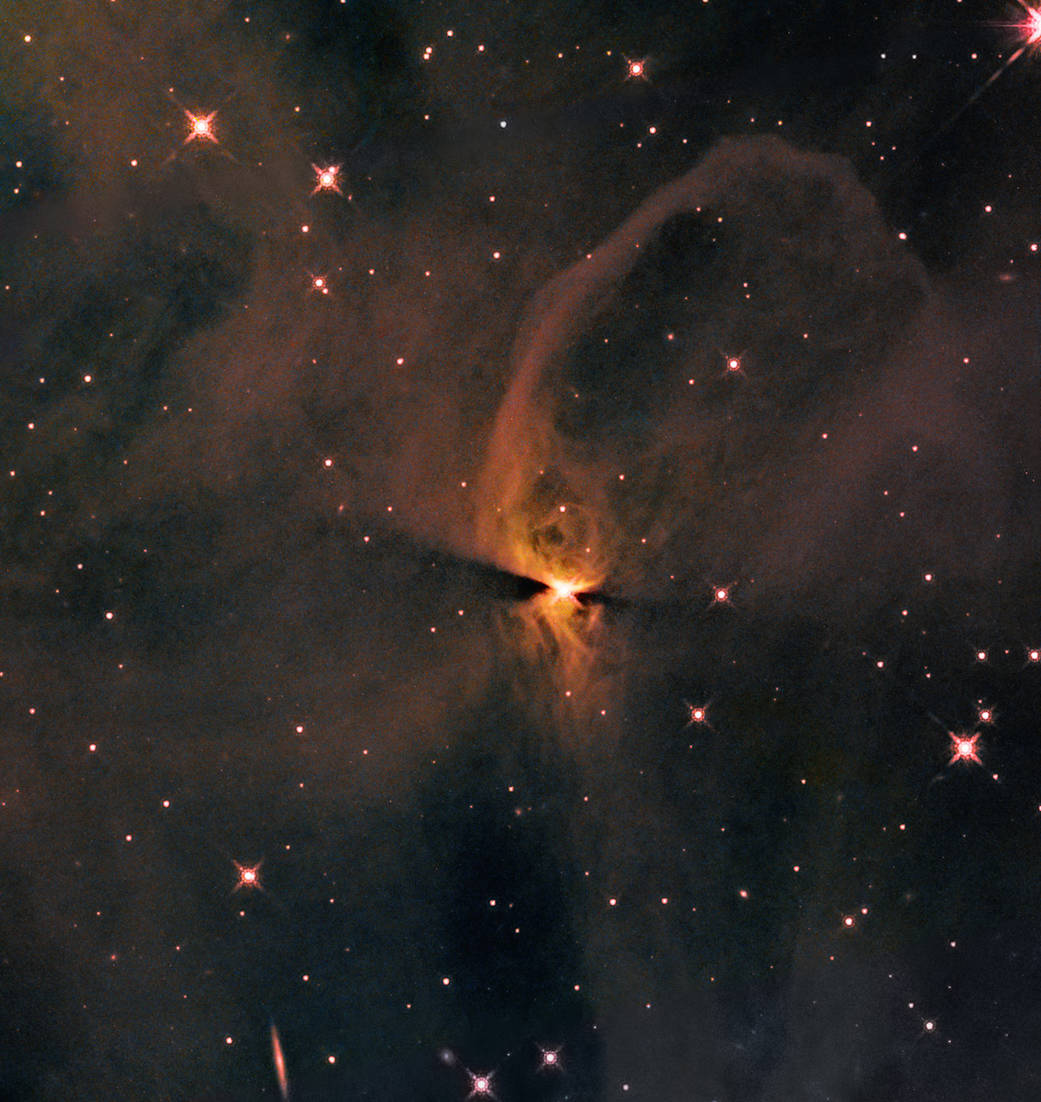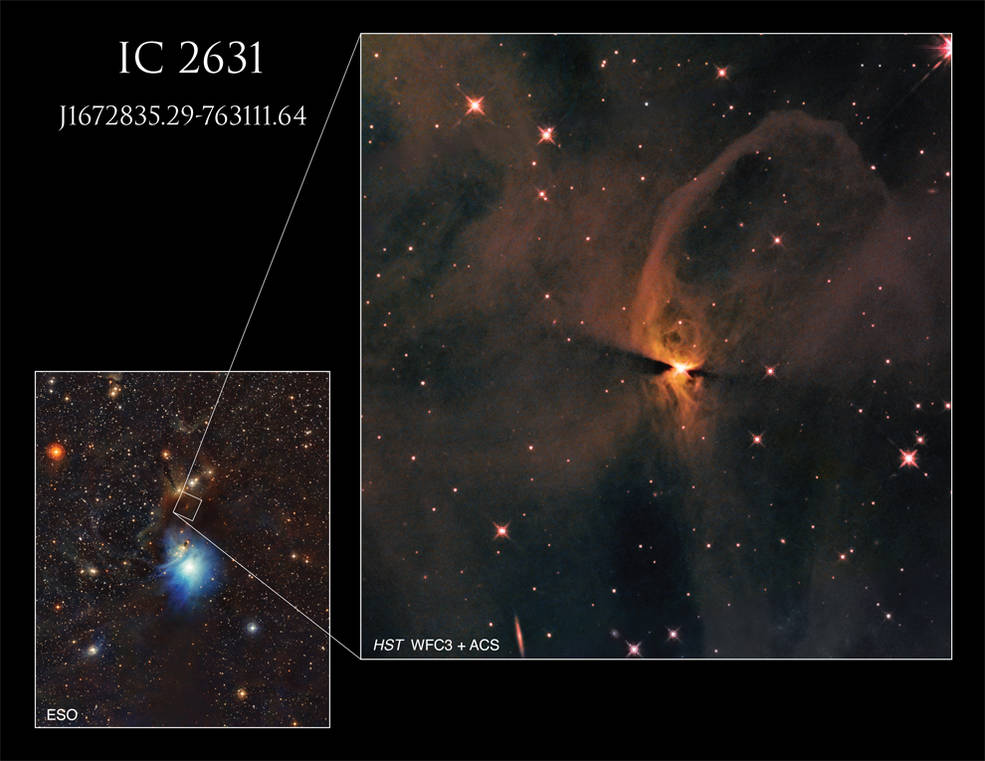Stars are born from clouds of gas and dust that collapse under their own gravitational attraction. As the cloud collapses, a dense, hot core forms and begins gathering dust and gas, creating an object called a “protostar.”
恒星是由气体云和尘埃在自身引力作用下坍缩而形成。随着云团坍缩,会形成一个致密、炽热的核心,并开始聚集尘埃和气体,形成一个称为“原恒星”的物体。
This Hubble infrared image captures a protostar designated J1672835.29-763111.64 in the reflection nebula IC 2631, part of the Chamaeleon star-forming region in the southern constellation Chamaeleon. Protostars shine with the heat energy released by clouds contracting around them and the accumulation of material from the nearby gas and dust. Eventually enough material collects, and the core of a protostar becomes hot and dense enough for nuclear fusion to begin, and the transformation into a star is complete. The leftover gas and dust can become planets, asteroids, comets, or remain as dust.
这张哈勃红外图像拍摄到了反射星云IC2631中的一颗原恒星J1672835.29-763111.64,该星云是南天极蝘蜓座蝘蜓恒星形成区的一部分。原恒星利用其周围云层收缩释放的热能以及附近气体和尘埃的物质积累而发光。最终收集到足够的物质,原星的核心变得足够热和致密,可以开始进行核聚变,并完成向恒星的转变。剩余的气体和尘埃可以成为行星、小行星、彗星,或者保持为尘埃的形式存在。
This image is part of a Hubble survey targeting 312 protostars within molecular clouds previously identified with the Spitzer and Herschel infrared space observatories. Protostars are visible primarily in infrared light since they emit a lot of heat energy, and their visible light is obscured by the dust around them. Hubble’s advanced infrared capabilities could better resolve the protostars and examine their structure, including the accumulating gas and dust and faint companion objects.
这张图片是哈勃调查的一部分,调查对象是先前由斯皮策和赫歇尔红外空间观测站确定的分子云中的312颗原恒星。原恒星主要在红外光下可见,因为它们释放出大量的热能,而它们的可见光被周围的尘埃所遮挡。哈勃望远镜先进的红外能力可以更好地分辨原恒星,并检查它们的结构,包括积累的气体、尘埃和微弱的伴星。
哈勃望远镜敏锐的眼睛在反射星云IC 2631中捕捉到一颗名为J1672835.29-763111.64的原恒星。
影像来源:NASA, ESA, T. Megeath (University of Toledo), K. Stapelfeldt (Jet Propulsion Laboratory), and ESO; Processing: Gladys Kober (NASA/Catholic University of America)
主图来源:NASA, ESA, T. Megeath (University of Toledo), and K. Stapelfeldt (Jet Propulsion Laboratory); Processing: Gladys Kober (NASA/Catholic University of America)




